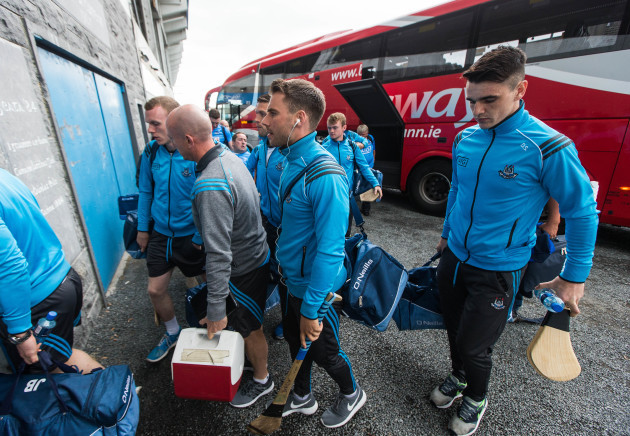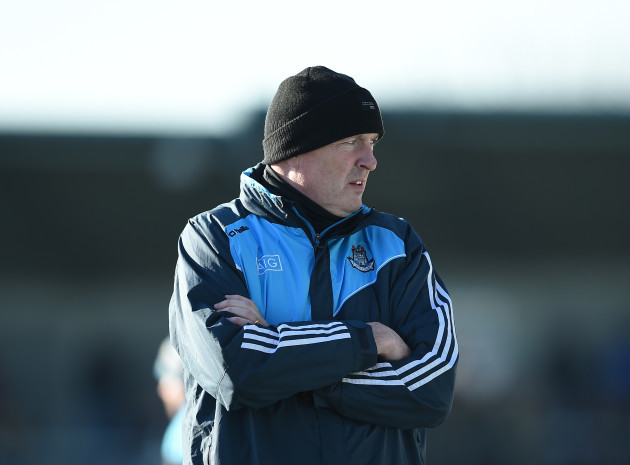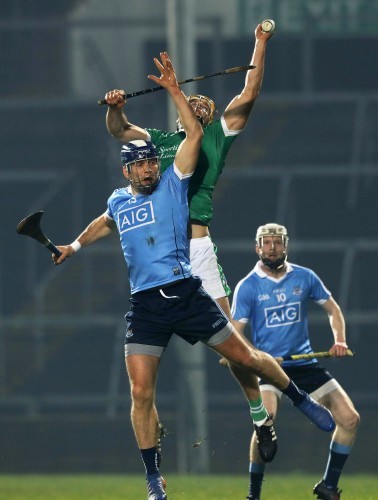DANNY SUTCLIFFE WAS asked recently to describe the style of play Pat Gilroy was looking to employ with Dublin.
“It’s high intensity, high pressure and moving the ball through the hand very quick,” he said. “It’s no real secret. Galway do it, everyone does it.”
It should be no surprise that Gilroy, who made his name as a football man, favours a hard-running, hand-passing game that wouldn’t look out of place with a size five O’Neills.
The word from the Dublin camp is that Gilroy and his management team of Anthony Cunningham and Mickey Whelan will be giving the players a very straightforward set of instructions to follow on the field.
Forcing turnovers high up the field through ferocious tackling will be a key part of the agenda.
“It’s pressing high and turning over the ball and there’s no real secret to it,” Sutcliffe continued. “It’s just to do it for a whole game, that’s all.
“Some of the games we played in, it’s when our pressure and intensity drops….that’s our brand, it’s no secret. When that’s not there you can really see it’s not there.
“If our pressure, tackling and intensity is not there, and the speed we’re doing things, if that starts slowing or we let off…We know what it is. If that’s there for the full 70 minutes we will back ourselves against anyone.”
When Dublin finally broke the glass ceiling and lifted the All-Ireland football crown under Gilroy in 2011, the half-forward line consisted of three ball-playing enforcers: Paul Flynn-Barry Cahill-Bryan Cullen.
They set the tone and brought an incredible work-rate to the Dublin forward line, while also dropping deep when their opponents attacked.
So far this year, Dublin have usually played with what shapes up as a four-man half-forward line or a three-man midfield. Without the ball, a midfielder usually sits into the centre-back position to release the number 6 to sweep in front of his full-back line.
Cuala’s Sean Moran will fit neatly into this system at centre-back, while Conal Keaney and Ryan O’Dwyer will be Gilroy’s enforcers up front.
When Gilroy took charge of the hurlers this year, he prioritised shoring up the leaky defence and bringing a greater work-rate across the team.
Dublin conceded 15 goals across league and championship last season, including six against Tipperary in Semple Stadium when they bowed out of the championship last July.
They shipped six goals in six games during the league this year, but kept clean sheets against both Antrim and Laois. Offaly and Tipperary were the only sides who put more than one goal past goalkeeper Alan Nolan, while they held the dangerous attacks of Limerick and Galway to just one green flag each.
While Dublin will be aiming to sneak into the top three in Leinster, relegation to the Joe McDonagh Cup remains a very real possibility. How well they deal with the attacking threats of Galway, Kilkenny, Offaly and Wexford in the championship will go a long way to determining the outcome of their summer.
Interestingly, the only games where Dublin have conceded more than one goal this season have both been in Croke Park.
Goal-hungry forwards like Conor Whelan, Conor McDonald, TJ Reid and Shane Dooley naturally prefer the wide expanses of HQ to tighter provincial grounds, so it’s significant that Dublin will play their home games in Leinster at Parnell Park.
Jim Gavin’s footballers will play at Croke Park for their home and neutral games if they make it to the Super 8s, as expected. Meanwhile, the county hurlers will play Kilkenny (13 May) and Offaly (3 June) in the smaller confines at Donnycarney.
The tighter venue will fit neatly into Gilroy’s game-plan. It’ll be far harder to cut them open for goals and they’ll be able to sustain a higher intensity game for longer than they would in Croke Park.
While Dublin haven’t won a game at Croke Park since they beat Wexford there in the Leinster quarter-final in May 2016, Parnell Park has been a far happier hunting ground for them.
“Parnell Park is a brilliant venue for any league or championship game,” says Chris Crummey.
“Hopefully we get a massive Dublin crowd out, because the players feed off that atmosphere. It’s brilliant. I personally really enjoy playing in Parnell Park.
“There’s a lot of familiarity playing there. We play a lot of our club matches there, lads are very familiar with it. It’s a great venue to play championship, so I’m really looking forward to it.
“I think a lot of teams are going to focus on their home games this year, trying to get the wins in your home games, trying to make your home venue a fortress. That’s definitely something we’ll be trying to do this year, making Parnell Park a fortress.”
The42 is on Instagram! Tap the button below on your phone to follow us!




